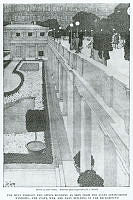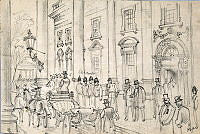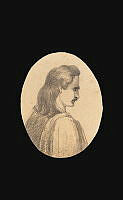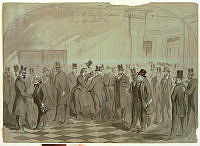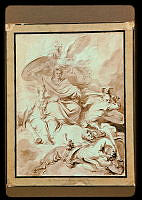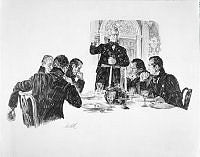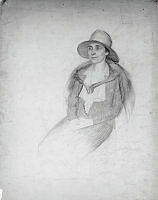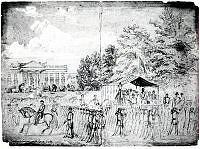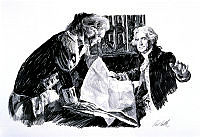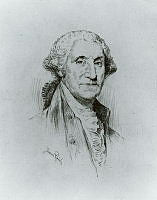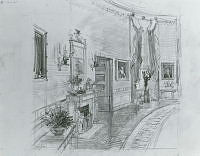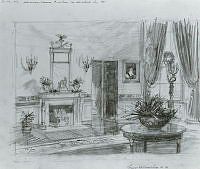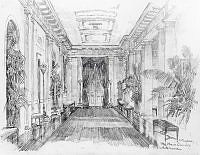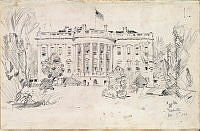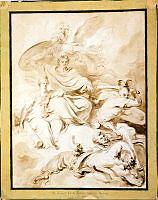The Outgoing and Ingoing Presidents Leaving the White House, at 10:30 AM, for the Capitol (front), White House Collection
This pencil sketch by Albert Berghaus is of Inauguration Day 1877. Outgoing President Ulysses S. Grant and President-Elect Rutherford B. Hayes leave the White House for the ceremony at the Capitol. Berghaus was a Reconstruction-era American illustrator who worked for Frank Leslie's Weekly. Berghaus' original works are extremely rare and few are in private collections. This sketch appears to be preliminary, with details such as the detailed stonework over the entrance to the North Portico only partially completed, as though Berghaus intended to use it for a larger work or finish the sketch later. See image 8772 to see the reverse side sketch and inscription.
